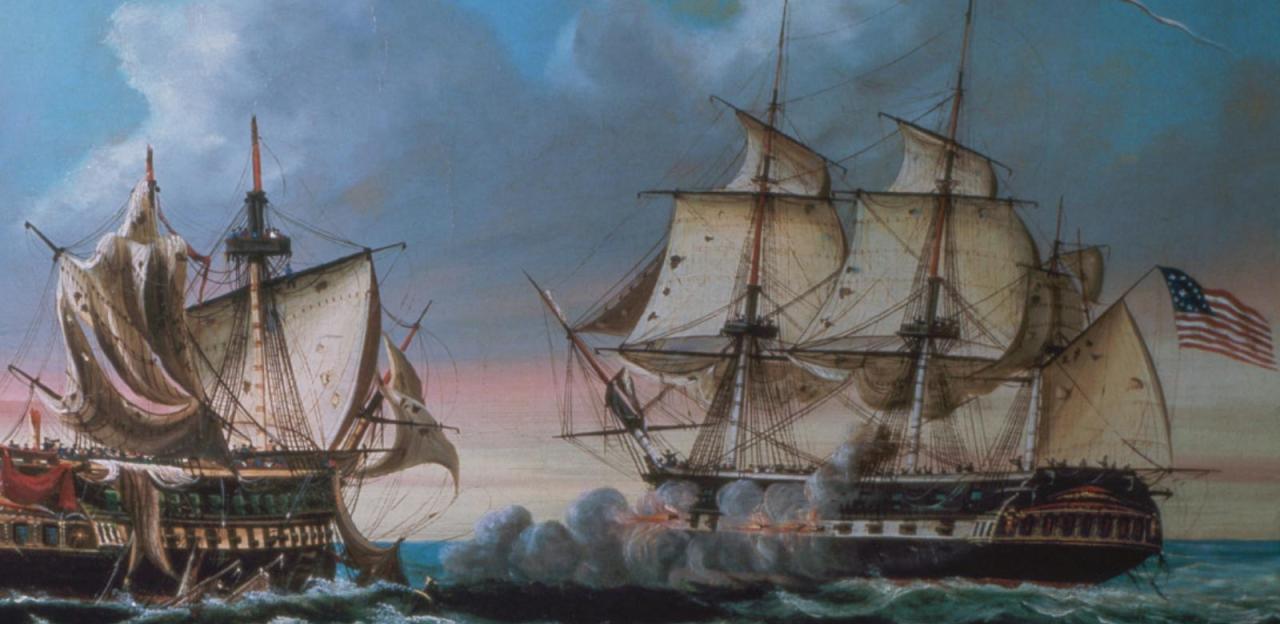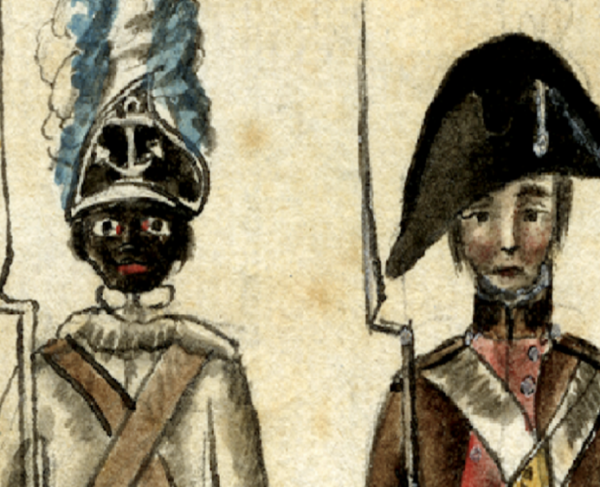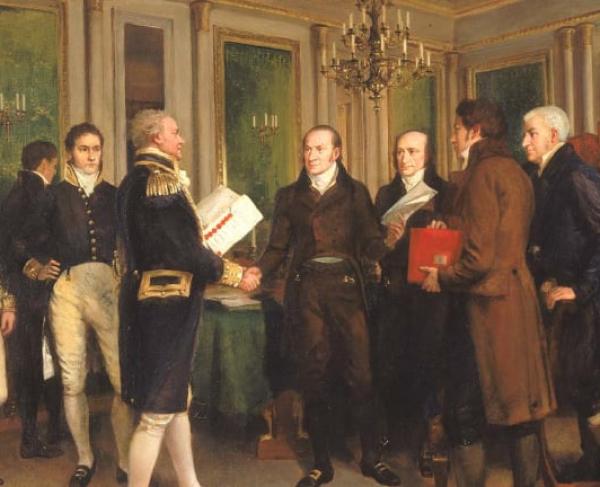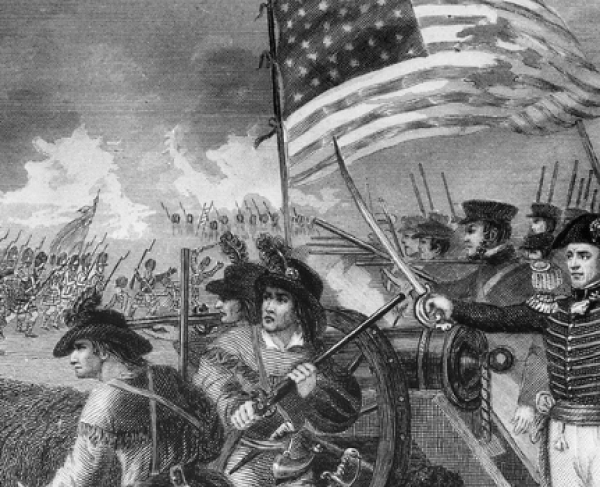Naval Glossary

Ships:
Ship of the Line: This was the standard type of battleships in the late 18th and early 19th centuries. They were called such because they were designed to hold their place in the "line of battle," a long single-file line which allowed the ships to bring their full broadside firepower to bear, which made it the standard naval battle tactic of the day. The Royal Navy often graded their battleships as either First Rate, Second Rate, Third Rate, etc., which depended on their size and firepower. First Rates could be enormous ships, but all ships of the line were built with durability in mind over maneuverability. The world's most famous ship of the line, Horatio Nelson's HMS Victory, was large enough to hold over one hundred guns ranging from 24 to 42-pounders, and over 6,000 trees were used in its construction.
Frigate: Smaller, faster, and less powerful than the ships of the line, frigates rarely fought in pitched battles, but patrolled the high seas to protect smaller and more vulnerable ships, or prey on them. They were very well-armed and could travel at great speeds, and were large enough to act on long, ocean-going voyages independently. The average frigate carried about 28 guns, but larger models, like the famous USS Constitution carried up to 44. Frigates like the USS Constitution earned fame in the Revolutionary War and War of 1812, as well as the Barbary Wars in the Mediterranean, as they were suited to hunting down the lightly-armed pirate vessels.
Sloop: A sailing ship that carried up to 18 guns. Sloops (officially called sloops-of-war) often filled similar functions to frigates, but were even smaller and less powerful. This did mean that they were cheaper to construct, however, so the fledgling American navy constructed a great many of them during the Revolutionary War and War of 1812. They and other kinds of smaller warships were not only suited to the open ocean, but also the fighting on smaller bodies of water like the Great Lakes, and they featured heavily in the Battle of Lake Erie on both sides. Later sloops, like the USS Constellation were used to crack down on the Atlantic slave trade in the years before the Civil War.
Gunboat: These were small, undecked vessels that only carried a single cannon on the bow, or front of the ship. They were cheap to build, light, and maneuverable enough to use in shallow water, unlike the larger ocean-going ships. Because of this, President Thomas Jefferson believed that a fleet of gunboats would be sufficient to deter unfriendly naval aggression, and their use fit well with his disdain for professional militaries. He was wrong, for though gunboats could swarm over larger ships with enough numbers on their side, a single hit could snap one in half. They were completely unable to break the British blockade during the War of 1812.
Ironclad: These are the direct ancestors to the modern battleship. The first ironclads were essentially wooden steam vessels retrofitted with iron plating for armor. They filled a variety of roles, often the same as a frigate, but their armor allowed them to attack wooden vessels with impunity, as most ships' guns did not have the capabilities to pierce through the iron exterior. The world's first battle between ironclads, the USS Monitor, designed by Swedish inventor John Ericsson and American Theodore Timby, and the CSS Virginia, ended in a stalemate. The Monitor was also unique as it was the first modern ship to feature a cannon mounted on a rotating turret as opposed having multiple guns line the sides of the vessel.
Other Terms:
The Age of Sail: Coinciding with the Age of Discovery, the Age of Sail refers to the period in history when almost all maritime trade, travel and warfare was conducted via sailing ships. Generally considered to last from the late 16th century to the mid 19th. It ended during the invention and widespread use of steam ships that did not rely on the weather for power.
Privateer: Essentially private contractors commissioned by a government in wartime to prey on enemy ships and take whatever loot they could find for themselves. These contracts came in the form of a sanctioned document called a Letter of Marque, without which, privateers could be treated as pirates and hanged for their crimes if caught. Many of America's earliest naval heroes, like John Paul Jones and Isaac Hull, functioned as privateers preying on British merchant ships in their respective wars.
Conscription: Conscription is the compulsorily enlistment in military service, often using a national draft of military aged men. Conscription often results from the inability to recruit and enlist sufficient numbers of military aged men during wartime.
Impressment: Impressment is a form of forced military/naval recruitment. Press gangs roamed around in search of military aged men, who they would essentially kidnap and force into military or naval service. The British famously utilized impressment on American ships to impress American sailors into the Royal Navy, which greatly upset Americans and was a catalyst for the War of 1812.
Learn more about early American naval history here.


